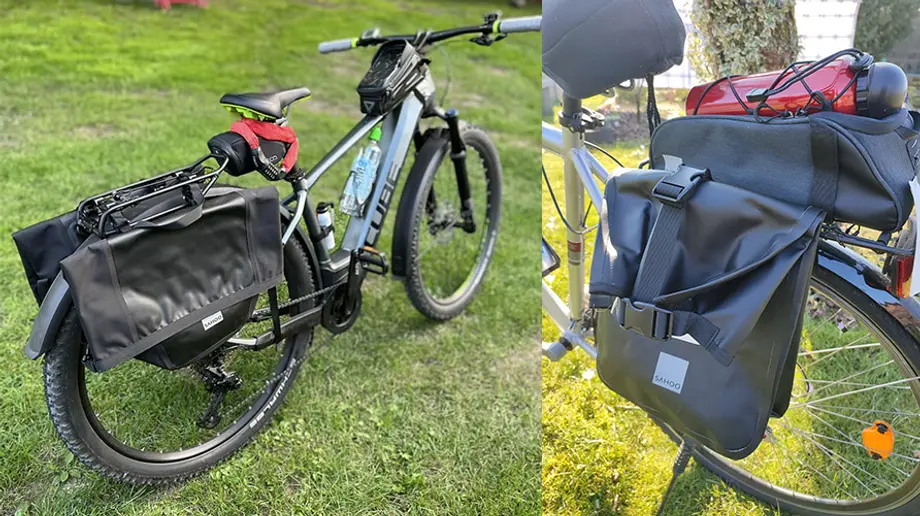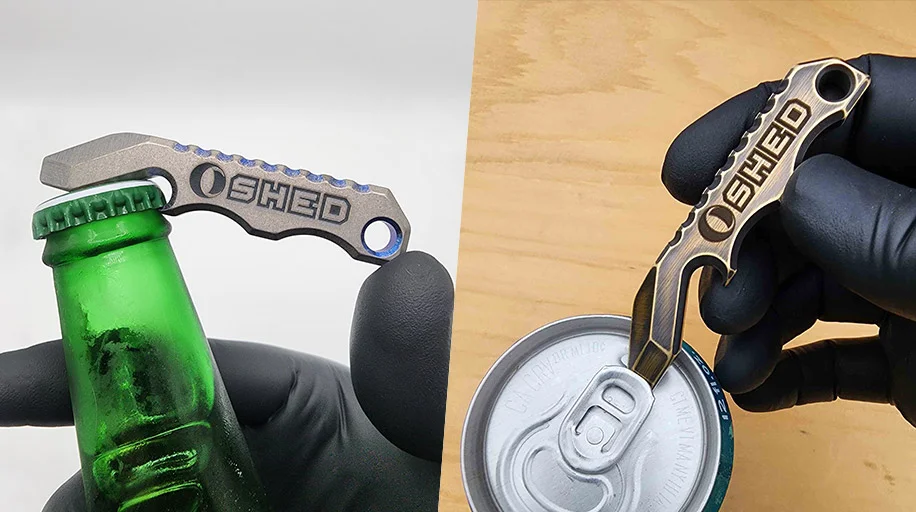Whether it's outdoor cycling or hiking, it's important to organize all the essential items in your travel bag. So how much do you know about the carrying bag specially designed for bicycles? Do you know what types and uses there are? This article takes you through all the types and uses of a bike bag in detail, and explores its availability and value.
Definition and Introduction
A bike bag is a type of carrying case designed to attach to a bicycle and is used to transport personal items, food, and equipment. They are usually made of durable, water-resistant materials and can be attached to the bike's frame, handlebars, or saddle. Bike bags are essential for anyone who rides their bike regularly, be it for commuting, leisure, or competition.
Types and installation of bike bags
Look at the bike bag position structure diagram:
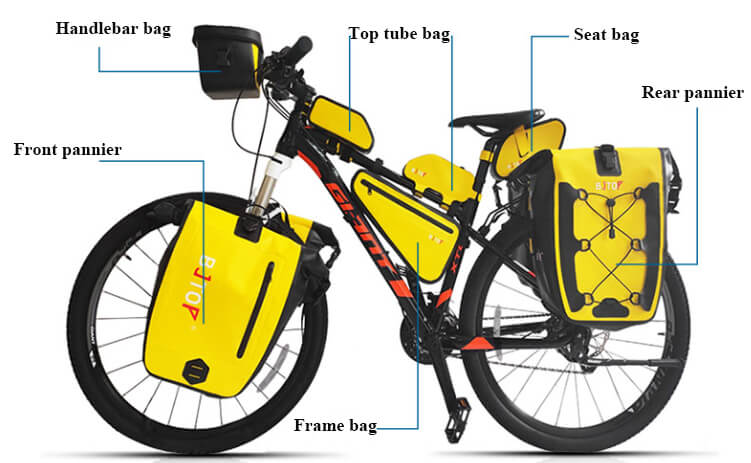
There are several types of bike bags, each with a specific purpose and design, including:
Panniers(Commuter Bikes): Large bags that attach to the bike rack and are typically used for carrying groceries, books, or other larger items. Panniers come in different sizes based on their capacity. Small panniers have a capacity of 10 to 20 liters per pair and are suitable for short commutes or day trips. Medium-sized panniers offer a capacity of 20 to 40 liters per pair, making them versatile enough for multi-day trips or light touring. Large panniers have a capacity of 40 to 60 liters per pair or more, making them ideal for long-distance touring or carrying bulkier items like camping gear, clothing, and food supplies.
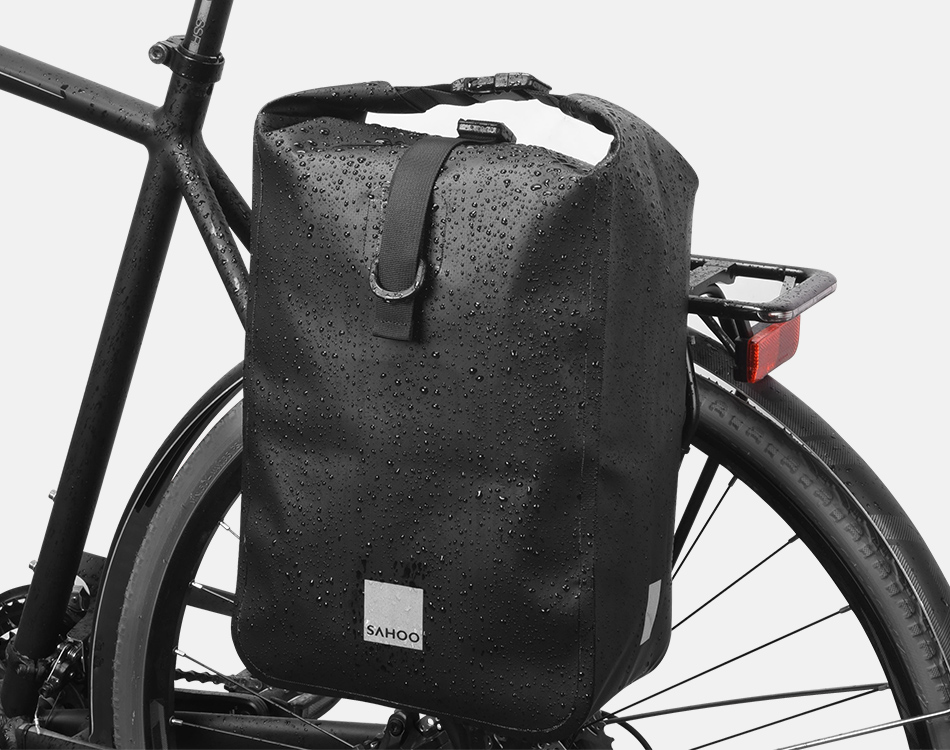
Bike front and rear panniers are bags that attach to the front and rear racks of a bicycle, respectively, and are commonly used for touring, bikepacking, commuting, and other types of cycling adventures where cyclists need to carry gear, clothing, and other essentials.
The best use of bike front and rear panniers is for long-distance touring or bikepacking trips where cyclists need to carry a significant amount of gear for extended periods of time. Front panniers can be used to carry lighter items like clothing or food, while rear panniers can carry heavier items like camping gear or tools. This helps to distribute the weight evenly across the bike, improving stability and balance while riding.
Front and rear panniers(Touring Bikes) are also useful for commuting, as they provide ample storage space for carrying office clothes, laptops, and other work-related items. They are also ideal for running errands, grocery shopping, or carrying everyday essentials while cycling around town.
Handlebar bags(Commuter Bikes): Handlebar bags: Small bags that attach to the handlebars of a bicycle and are designed for quick and easy access to essential items while riding. They are typically used for short trips, day rides, or bikepacking adventures, where cyclists need to carry small items such as snacks, maps, smartphones, or cameras within easy reach. The capacity of a handlebar bag is usually measured in liters and can range from around 2 liters up to 10 liters or more for larger models.
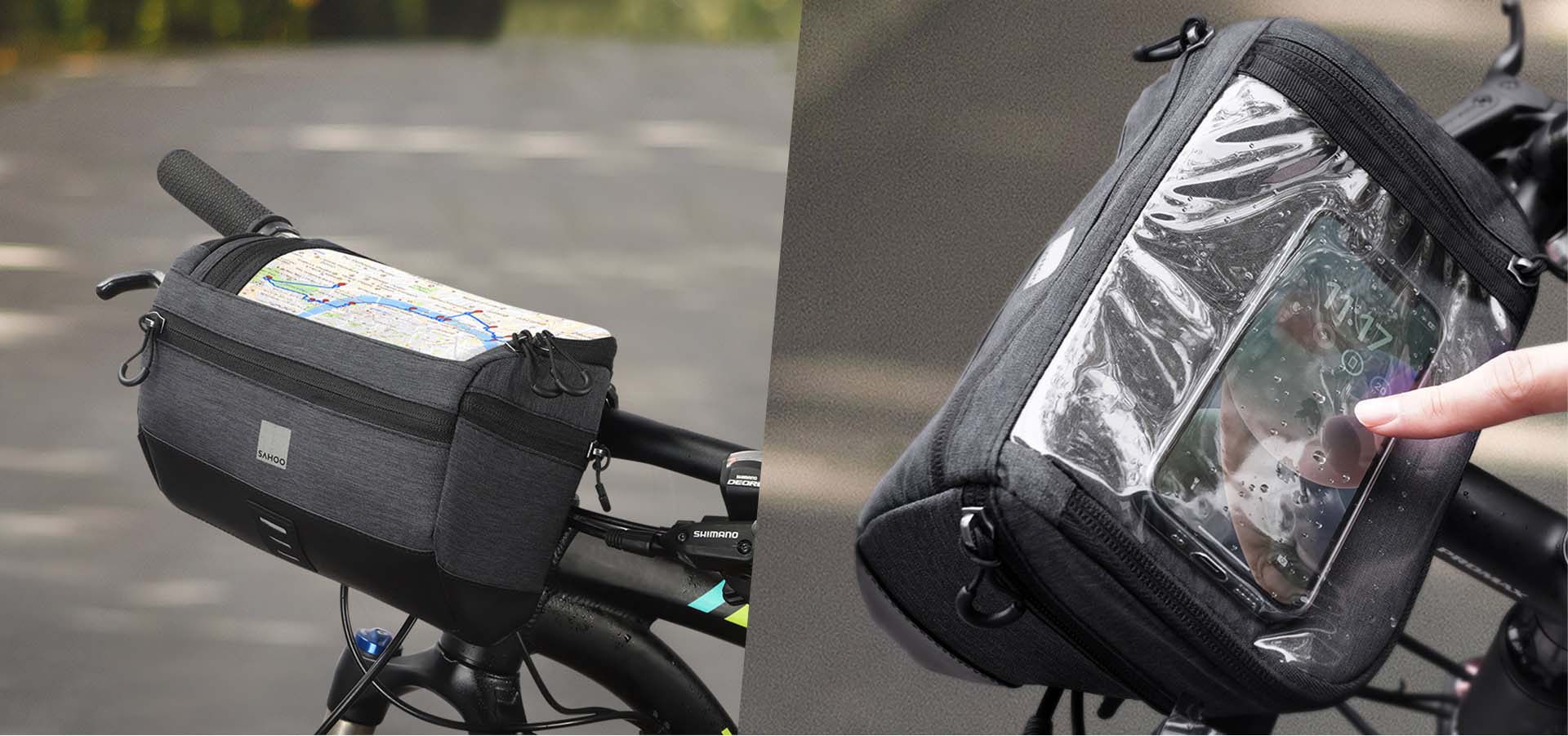
The best use of bike handlebar bags is for carrying lightweight and frequently accessed items that are needed on the go. They are particularly useful for bikepacking trips or off-road adventures where quick access to essentials is important. Handlebar bags can also be used for commuting or running errands, providing a convenient storage option for small items like keys, wallets, or sunglasses.
Note: A handlebar bag is a smaller, compact bag designed for quick access to essential items during a ride, while a handlebar roll offers larger storage capacity and is commonly used for carrying bulkier gear during bikepacking or adventure cycling.
Top tube bags(Mountain Bikes): Small bags that attach to the top tube of the bike frame, typically used for carrying snacks, phones, and other small items. Generally, top tube bags have a small to medium capacity, typically ranging from around 0.5 to 2 liters in volume.
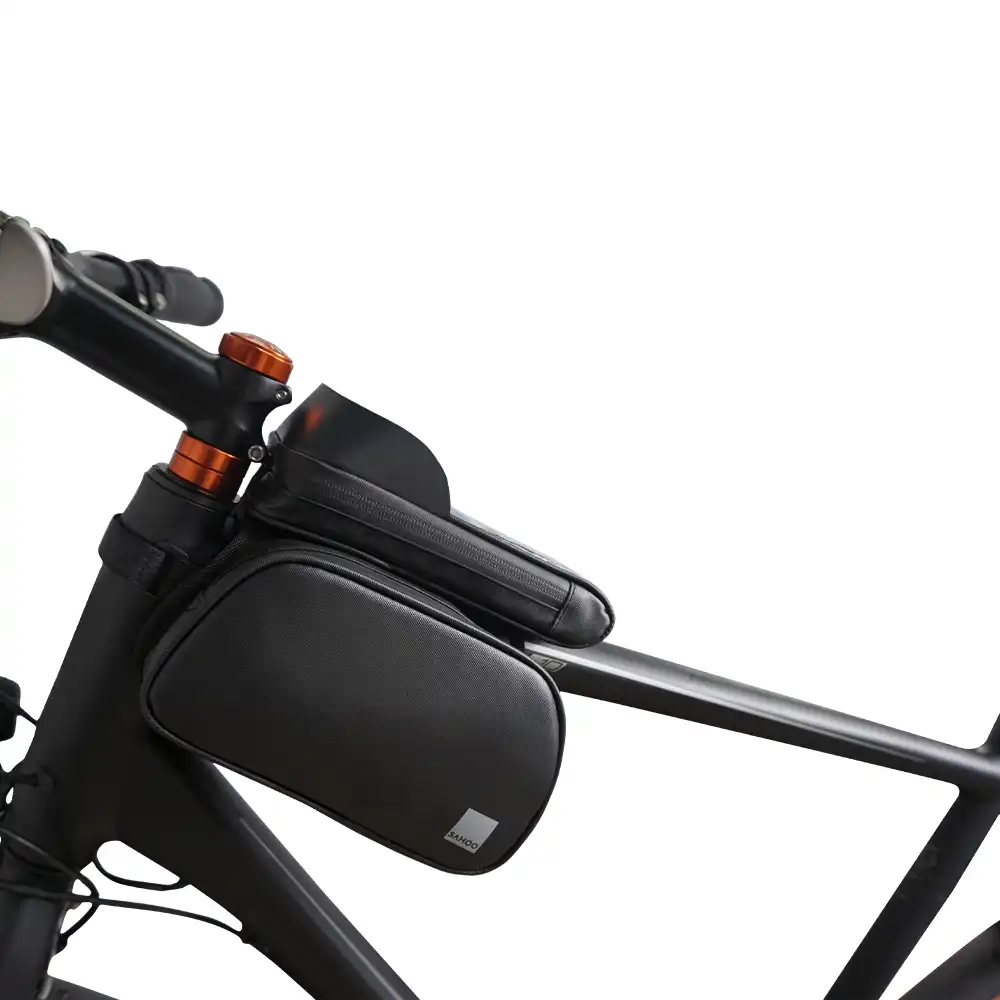
The best use of bike top tube bags is for carrying small, frequently accessed items that are needed while riding. They are particularly useful for long rides or bikepacking trips where quick access to essentials is important. Top tube bags are also commonly used by road cyclists for storing nutrition, allowing them to refuel on the go without stopping.
Top tube bags are compact and aerodynamic, making them suitable for use on road bikes, triathlon bikes, or any bike where reducing wind resistance is a priority. They are also compatible with most frame sizes and styles, including mountain bikes, gravel bikes, and touring bikes.
Frame bags(Road Bikes): Bags that attach to the bike frame, typically used for carrying heavier items such as food, clothing, and camping gear. Some frame bags can hold up to 6-7 liters of gear, while others may have a smaller capacity of around 2-3 liters.
The best use of bike frame bags is for carrying gear and essentials while maintaining a balanced weight distribution on the bike. Frame bags are typically used in combination with other types of bags like front or rear panniers to provide additional storage space for bulky or heavy items, while keeping the weight low and centered on the bike. They are ideal for multi-day bikepacking trips where a significant amount of gear needs to be carried.
Saddle bags(Road Bikes): Also known as seat bags, seat packs or under-seat bags, are small bags that attach to the underside of the bicycle saddle. They are designed for carrying small items such as tools, spare tubes, or personal belongings while riding. Generally, saddle bags offer a small to medium storage capacity, typically ranging from around 0.5 to 2 liters of volume.
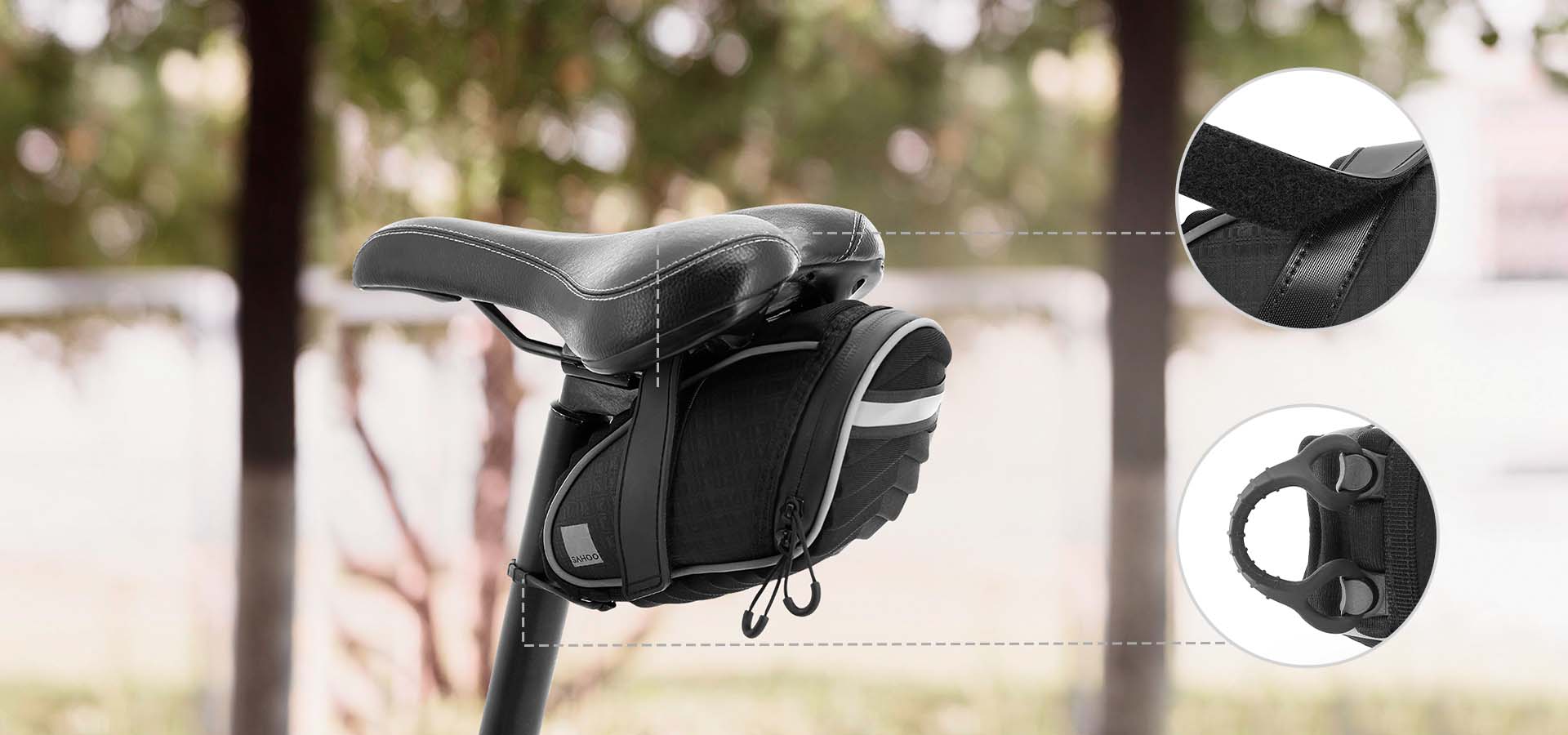
The best use of bike saddle bags is for carrying essential repair tools and spare parts for on-the-go repairs. They are particularly useful for road cyclists, mountain bikers, and touring cyclists who may need to fix a flat tire, adjust a derailleur, or perform other basic repairs while out on the road or trail. Saddle bags are also commonly used for carrying personal belongings such as a wallet, keys, or a small camera.
Bike saddle bags come in different sizes to accommodate various storage needs and fit different types of bicycles. They are typically attached to the bike saddle rails or seat post, and most modern designs are easily installed and securely attached to the bike, without interfering with the rider's pedaling or cycling comfort.
Other types:
Bike trunk bags(Touring Bikes): Trunk bags are larger bags that attach to the rear rack of a bicycle and provide ample storage space for carrying larger items, such as clothing, camping gear, or groceries. They are commonly used for commuting, touring, or running errands, and are known for their versatility and capacity. The capacity of a bike trunk bag can range from around 5 liters (300 cubic inches) up to 25 liters (1,500 cubic inches) or more.
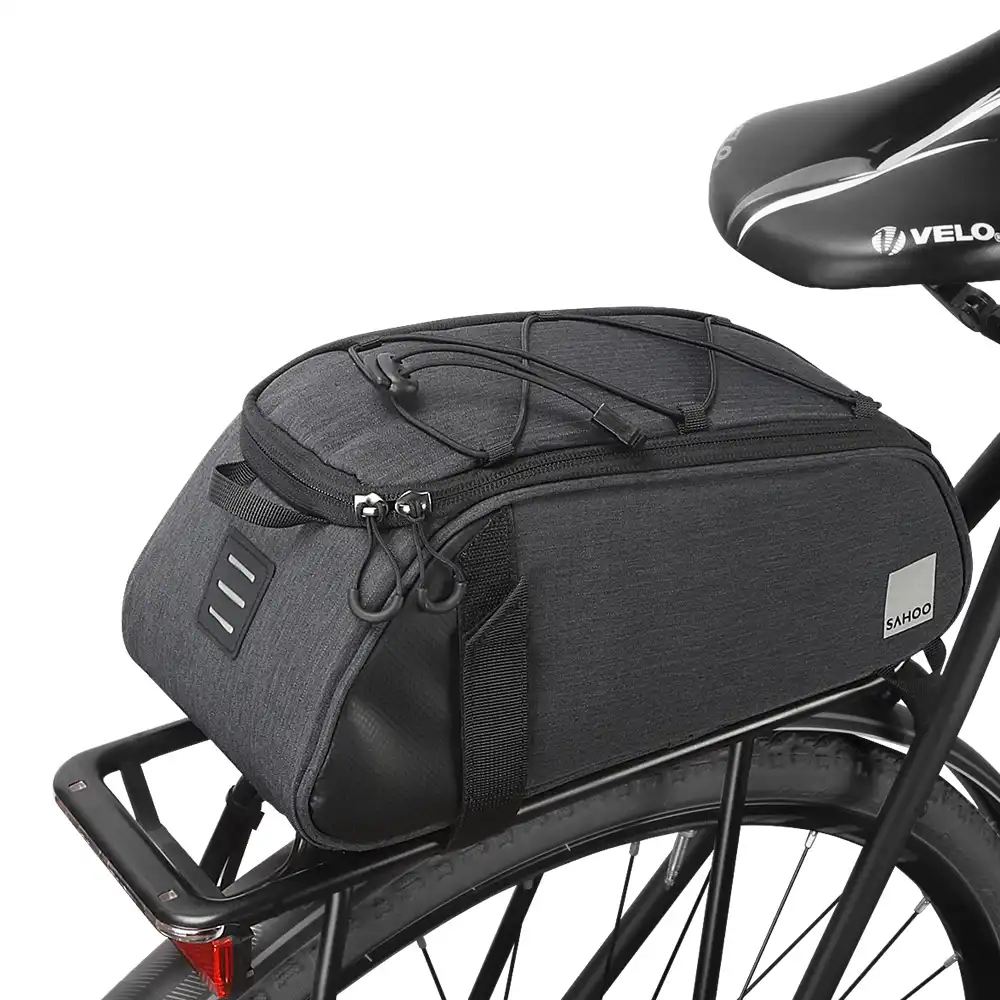
Bike handlebar rolls: Handlebar rolls are cylindrical bags that attach to the handlebars and can be used to carry lightweight gear or clothing for bikepacking or touring. They are typically used in combination with other bags, such as front panniers, to provide additional storage options. However, most handlebar rolls have a capacity ranging from 5 to 15 liters. Some larger handlebar rolls can even reach capacities of 20 liters or more.
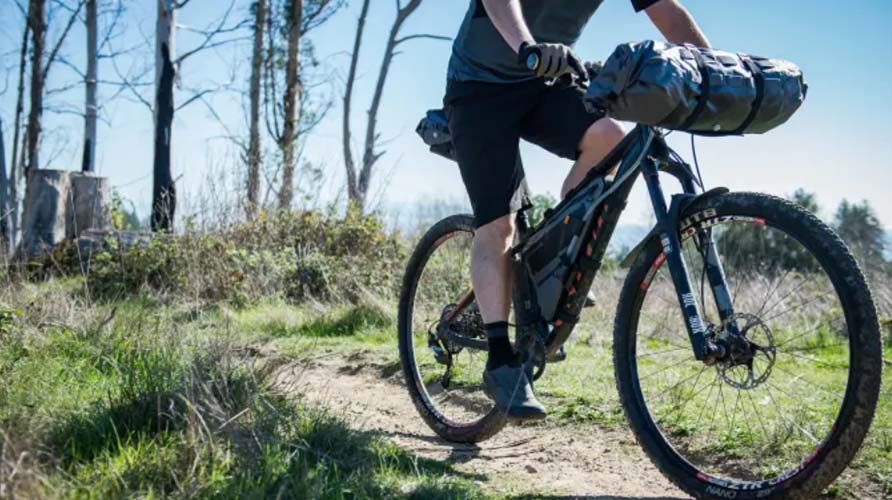
Bike hydration packs(Mountain Bikes): Hydration packs are backpack-style bags that are designed to carry water or fluids, along with other small items such as snacks, tools, or personal belongings. They are commonly used by mountain bikers, gravel riders, or other cyclists who need to stay hydrated during long rides or off-road adventures. The most common capacities for hydration packs range from 1.5 liters to 3 liters.
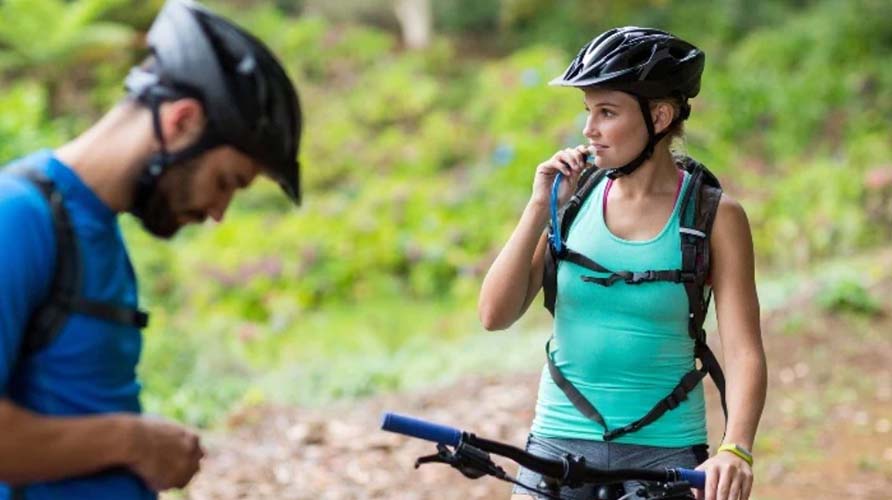
Bike messenger bags: Messenger bags are worn across the body and are designed for urban cycling, commuting, or messenger-style cycling. They typically have a large main compartment and various pockets or compartments for organizing personal belongings, and are known for their durability and functionality. The capacity of bike messenger bags can range from around 20 liters (approximately 5 gallons) up to 40 liters (around 10 gallons) or more.
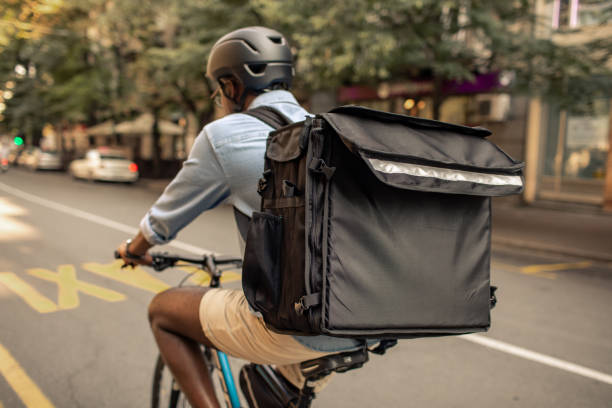
Bike cargo trailers: Cargo trailers are not technically bags, but they are a type of storage solution for cyclists who need to transport large or heavy items, such as groceries, camping gear, or other bulky loads. Cargo trailers attach to the rear of the bike and can provide significant storage capacity, making them suitable for touring, commuting, or hauling cargo. Commonly, bike cargo trailers can handle loads ranging from 50 pounds (22.7 kilograms) to over 150 pounds (68 kilograms). Some heavy-duty cargo trailers may even have a capacity of 200 pounds (90.7 kilograms) or more.
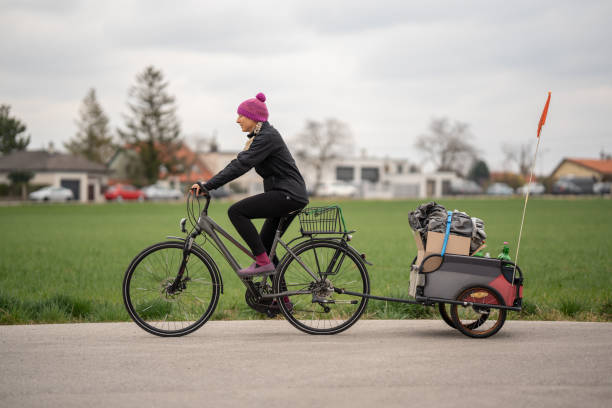
Folding Bike Carry Bags: These specialized bags are designed to neatly pack and transport folding bikes when not in use. They usually come with handles and shoulder straps for easy carrying. The actual capacity will vary depending on the design of the bag, but most folding bike carry bags have a capacity of around 50 to 100 liters (3000 to 6000 cubic inches).
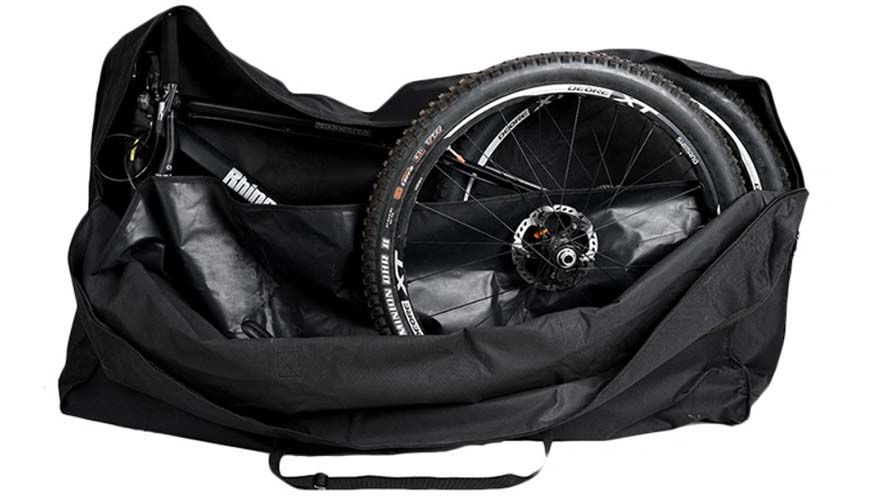
Battery Bags(Electric Bikes): These bags are specifically designed to carry spare batteries for electric bikes, allowing riders to extend their range. They are usually mounted on the frame or carried in panniers. Typically, Ebike battery bags for e-bikes are designed to hold batteries ranging from 36V to 72V. The capacity of the bag is often measured in liters or cubic inches and can range from around 2 liters (or 120 cubic inches) to 10 liters (or 600 cubic inches) or more.
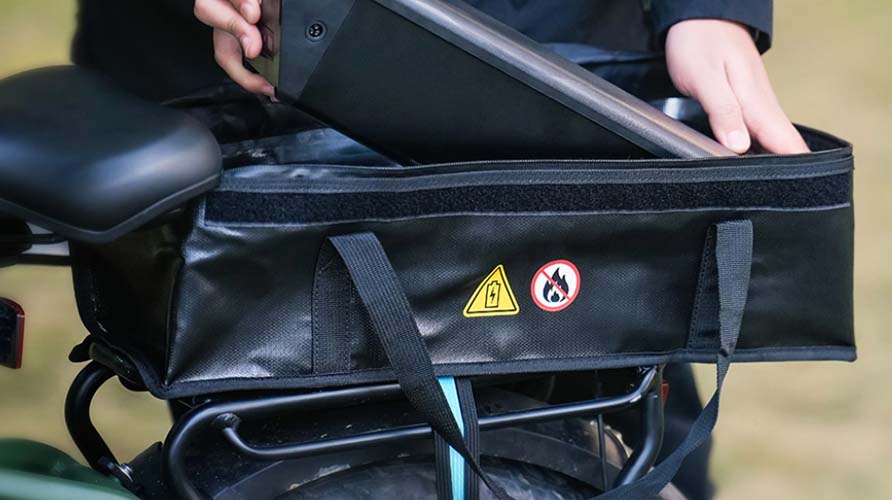
Bike travel cases(Road bikes, Mountain bikes, and Folding bikes): They are also called bike travel bags, specialized luggage designed to securely transport bicycles while traveling, including two types of hard-sided cases and soft-sided cases, providing protection against damage and offering convenient features for packing and maneuvering. The internal dimensions of bike travel cases typically range from 46 to 50 inches in length, 28 to 30 inches in width, and 9 to 12 inches in height. This allows them to accommodate a variety of bike sizes and configurations.
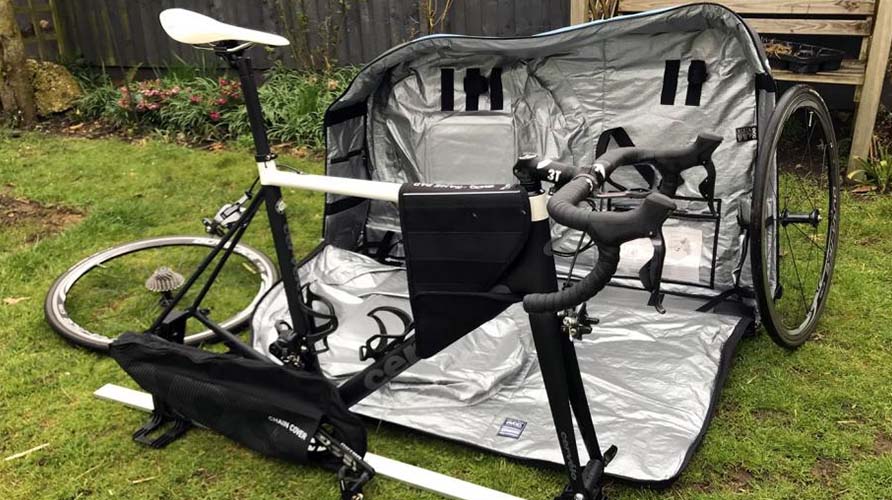
Fabric and Waterproof
When riding outdoors, it is inevitable to encounter rainy or foggy weather. And the items we put in the bicycle bag are easily damp or wet. Therefore, no matter which type of bicycle bag you choose, you must not ignore its fabric type and waterproof characteristics.
Below, we take a look at common fabrics and waterproof levels.
Single fabric type:
PVC: Waterproof but unhealthy.
PVC fabric is known for its high level of waterproofing, but it has been associated with environmental and health concerns. PVC bag involves the use of chlorine and can contribute to air and water pollution, and PVC is not biodegradable, potentially causing environmental harm. Additionally, PVC contains additives like phthalates, which are known to be endocrine disruptors and may have adverse effects on human health. As a result, some environmental and health advocates recommend opting for alternative materials like polyurethane-coated fabrics, recycled polyester, or organic cotton, which may be considered more sustainable and healthier options. Proper usage and disposal guidelines should be followed when using PVC bags, and further research and informed choices based on personal preferences and values are recommended.
Nylon: Water-resistant but not completely waterproof.
Nylon fabric is typically water-resistant, meaning it can repel water to some extent but may not be completely waterproof. Nylon fabrics can be treated with coatings or laminates to enhance their water-resistance, but the level of water resistance can vary depending on factors such as fabric thickness, type of coating, and bag construction. Nylon is commonly used in outdoor gear and apparel for protection against light rain or splashes, but may not provide complete waterproofing in heavy or prolonged rain or water exposure. Carefully checking bike bag specifications and care instructions is important to understand the level of water resistance and proper care for nylon fabric bags. Alternative materials or additional waterproofing treatments may be necessary for complete waterproofing in specific use cases.
Polyester: Water-resistant but cheap.
Polyester fabric is typically considered water-resistant, meaning it can repel water to some extent, but may not be completely waterproof. Polyester fabrics are tightly woven, providing some resistance to water penetration, and can be treated with coatings or laminates such as polyurethane to enhance their water resistance. However, the level of water resistance can vary depending on factors such as fabric thickness, type of coating, and construction of the bike bags. Polyester is widely used in various applications due to its affordability and versatility, but may not provide complete waterproofing in heavy or prolonged rain. It's important to check bag specifications and care instructions for proper care and maintenance of water-repellent properties, and additional waterproofing measures may be necessary for more demanding needs.
TPU: Fully waterproof but high costs.
TPU (Thermoplastic Polyurethane) is a synthetic material known for its excellent waterproof properties, and TPU fabrics are typically considered fully waterproof, providing effective water repellency and preventing water penetration. TPU is highly durable, flexible, and versatile, making it suitable for various applications. However, TPU may have a higher cost compared to other waterproofing materials like PVC or nylon, due to specialized production techniques and materials. The higher cost may be justified by TPU's superior waterproofing performance, durability, flexibility, and resistance to abrasion and chemicals. Careful consideration of specific requirements and budget is important when selecting TPU fabric bags, as in some cases, the higher cost may be justified, while in other cases, alternative materials may be more cost-effective. Proper care and maintenance are also important to ensure the longevity and performance of TPU bags.
PET: Not waterproof but more environmentally friendly.
PET (Polyethylene Terephthalate) fabric is not inherently waterproof, but it is known for its relatively more environmentally friendly properties compared to some other synthetic materials. It is recyclable and can be made from post-consumer plastic bottles, reducing waste and demand for new raw materials. Recycling PET requires less energy and water compared to materials like nylon or polyester, resulting in lower carbon emissions and reduced water usage during production. PET bags generally have a lower environmental impact, with lower greenhouse gas emissions and reduced water usage compared to other synthetic fabrics. Using PET fabrics in textile applications can contribute to a circular economy, where materials are recycled and reused, reducing overall environmental impact. Proper care, maintenance, and responsible end-of-life disposal or recycling are important to maximize the environmental friendliness of PET fabrics. Look for certifications or eco-labels, follow care and disposal instructions, and consider factors such as durability, reusability, and end-of-life options when making informed decisions about the environmental impact of PET fabrics.
Coated Fabric Type:
PU(Polyurethane)-coated nylon: typically waterproof or water-resistant; excellent abrasion resistance.
PVC-coated polyester: typically waterproof; excellent resistance to abrasion, UV radiation, and chemicals.
TPU-coated nylon: typically highly water-resistant or waterproof; more environmentally friendly.
Useability and Value
The usability of bike bags is highly dependent on the type of bag and its intended use. For example, panniers are ideal for long-distance touring or bikepacking trips where cyclists need to carry a significant amount of gear, while handlebar bags are designed for quick and easy access to small items while riding. Top tube bags are useful for carrying small, frequently accessed items, while frame bags are suitable for carrying heavier items and maintaining balanced weight distribution on the bike. Saddle bags are great for carrying essential repair tools and spare parts, while trunk bags are known for their versatility and capacity. Handlebar rolls and hydration packs provide additional storage options for specific needs.
The value of bike bags lies in their ability to provide convenient and organized storage solutions for cyclists, allowing them to carry their belongings safely and efficiently while riding. Well-designed bike bags are made of durable, water-resistant materials and are easy to install and securely attach to the bike without interfering with the rider's comfort or pedaling. They are compatible with various types of bicycles and are designed to withstand the rigors of cycling, ensuring that the items inside are protected from the elements and stay in place during the ride.
